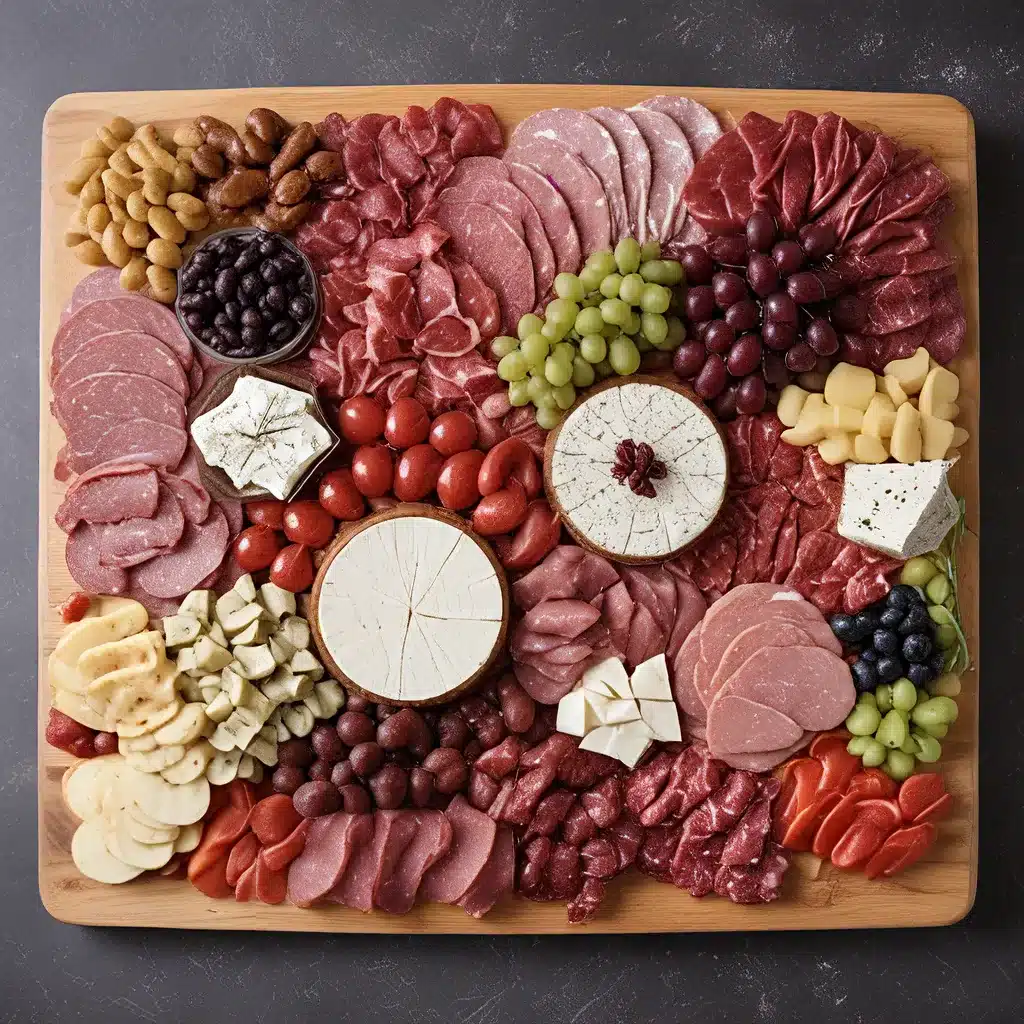
Elevating the Art of Entertaining with Cheese, Meats, and More
As a self-proclaimed wine and cheese enthusiast, I’ve always found joy in the art of curating the perfect charcuterie board. It’s not just about throwing together a random assortment of meats and cheeses – no, no, no. Crafting a captivating charcuterie display is a true labor of love, a delicate balance of flavors, textures, and visual appeal that can elevate any gathering, from a cozy girls’ night in to a sophisticated soirée.
Expert advice has been my guiding light in this endeavor, and I’m thrilled to share my hard-earned wisdom with you. Whether you’re a seasoned charcuterie connoisseur or a newcomer to the world of artisanal meats and cheeses, this comprehensive guide will have you assembling Instagram-worthy boards in no time.
Mastering the Fundamentals: Essential Charcuterie Components
The foundation of a stellar charcuterie board lies in the carefully curated selection of its key elements. From savory cured meats to creamy cheeses, each component plays a vital role in creating a harmonious and visually appealing display.
Meats: Cured meats, such as salami, prosciutto, and pepperoni, are the centerpiece of any charcuterie board. But don’t be afraid to mix it up – uncured options like turkey salami can also add a delightful twist.
Cheeses: A diverse array of cheeses is a must. Think creamy bries, sharp cheddars, and tangy blue cheeses. Don’t forget to include a few specialty or aged varieties for added complexity.
Fruits and Vegetables: Fresh, seasonal produce is a game-changer. Juicy grapes, crisp apple slices, and tangy olives or pickles provide the perfect contrast to the rich meats and cheeses.
Crackers and Breads: Neutral-flavored crackers and toasted bread slices offer the necessary crunch to balance out the softer textures. Don’t forget to include gluten-free options for your guests with dietary restrictions.
Condiments: Elevate your charcuterie experience with a range of condiments, such as fruit preserves, honey mustard, and sour cherry chevre. These tangy, sweet, and savory accompaniments add depth and excitement to every bite.
Garnishes: While not necessarily edible, fresh herbs like rosemary and basil can add a fragrant touch and make your board even more visually appealing.
Crafting the Perfect Arrangement: Composition and Presentation
Now that you’ve gathered all the essential components, it’s time to bring your charcuterie vision to life. This is where the true artistry begins, and I’m here to share my tips and tricks for creating a visually stunning display.
Arranging the board is a delicate dance, requiring an eye for balance and a touch of creativity. Start by placing the larger, more substantial elements, such as wedges of cheese and rolls of salami, as the foundation. From there, fill in the gaps with smaller bites, like olives, grapes, and crackers, ensuring a harmonious flow and a visually appealing layout.
One of my personal secrets is to strategically position the different textures and colors. Juxtapose the smooth, creamy cheeses with the crunchy crackers and crisp fruits. Use the vibrant hues of the produce to add pops of color and visual interest.
Don’t be afraid to get a bit playful with your presentation. Experiment with various serving vessels, like small bowls or ramekins, to neatly contain the condiments and garnishes. And don’t forget to add a personal touch, whether it’s a sprinkle of fresh herbs or a drizzle of honey over the cheese.
Elevating the Experience: Charcuterie Board Upgrades and Variations
While the classic charcuterie board is a crowd-pleaser, there’s always room for experimentation and personal flair. Why not try your hand at a themed board or a unique twist on the traditional?
For the adventurous palate, consider a Mediterranean-inspired board, featuring a selection of olives, artichokes, and peppadew peppers, alongside the usual suspects. Or perhaps a seafood-centric board, with smoked salmon, trout, and marinated mussels.
If you’re feeling particularly creative, why not try your hand at a dessert charcuterie board? Indulge your sweet tooth with an array of dark chocolate, chocolate-covered nuts, and dried fruits, all complemented by a creamy brie or mascarpone.
The possibilities are truly endless, and the best part is that you can tailor your charcuterie creations to suit the preferences and dietary needs of your guests. Whether you’re hosting a girls’ night or a sophisticated dinner party, a well-curated charcuterie board is sure to impress.
The Art of Entertaining: Charcuterie and Beyond
Crafting the perfect charcuterie board is not just about the food – it’s about creating an experience. The art of entertaining is all about connecting with your guests, fostering conversation, and ensuring they feel welcomed and relaxed.
As someone who loves to host, I’ve learned that a beautifully assembled charcuterie board is the ultimate icebreaker. It encourages guests to mingle, sample different bites, and engage in lively discussions about their favorite flavors and pairings.
But the fun doesn’t have to stop there. Why not elevate the experience by incorporating a selection of delectable wines or refreshing cocktails? Or, if you’re feeling particularly adventurous, you could even try your hand at a themed tasting menu, with each course highlighting a different element of the charcuterie board.
Regardless of the approach, the key is to create an inviting and comfortable atmosphere where your guests can truly savor the moment and the delicious offerings before them. After all, the true art of entertaining lies in the ability to make your loved ones feel cherished and appreciated.
So, whether you’re planning a cozy gathering or a sophisticated soirée, let this guide be your roadmap to crafting the perfect charcuterie board and elevating your hosting skills to new heights. Happy entertaining, my friends!

